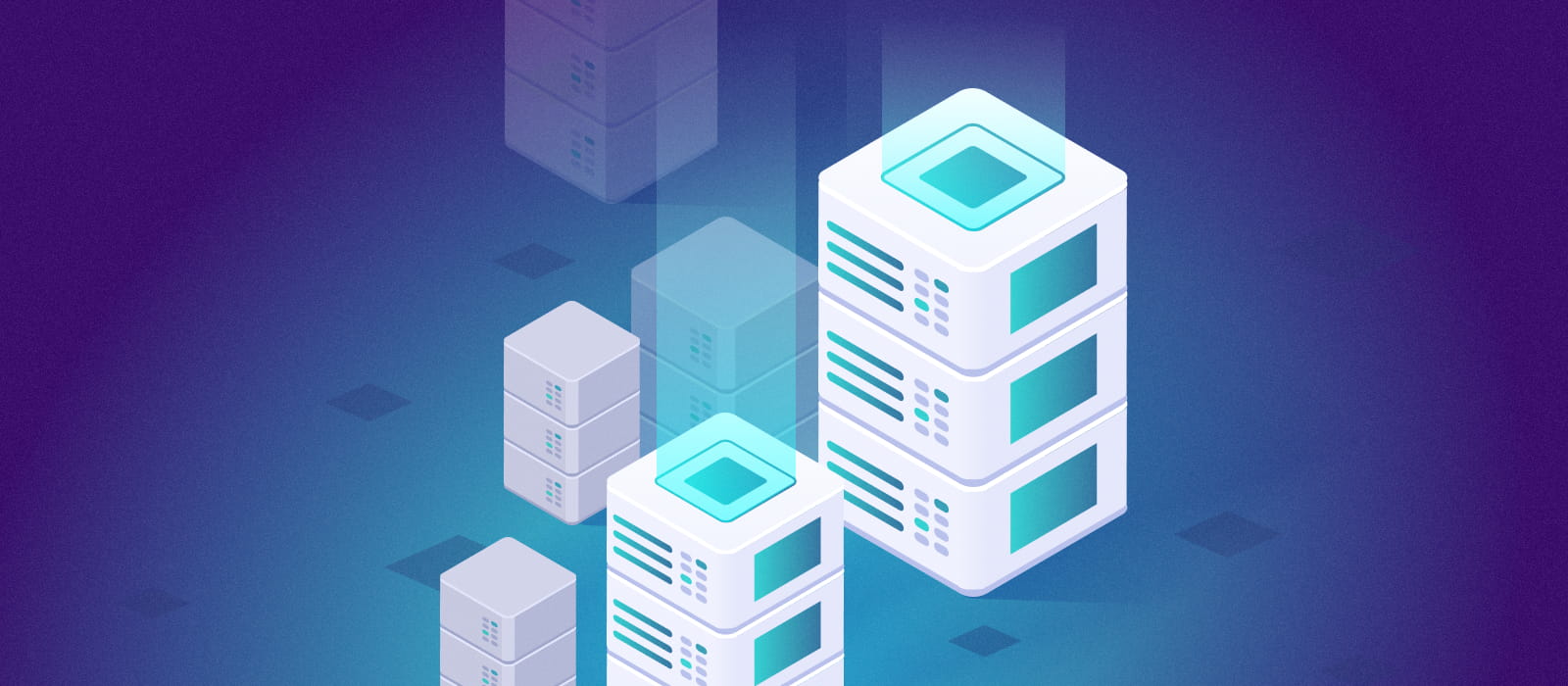In today's data-driven world, businesses are flooded with information. To stay competitive, enterprises can no longer rely on ad hoc data storage solutions; they need structure and coherence. This is exactly what enterprise data warehouse architecture can give.
Enterprise data warehouse architecture (EDWA) is more than just a storage solution — it’s the backbone of informed decision-making. It is projected that the global data warehousing market will reach $51.18 billion by 2028.
With the ability to collate vast amounts of information into one centralized location, EDWA ensures that businesses have consistent, high-quality data at their fingertips. This paves the way for accurate forecasting, insights into customer behavior, streamlined operations, and a significant edge over competitors.
Read on to find out more about this transformative approach to data management. In our article, we will delve deep into the key types of enterprise data warehouse architecture, shedding light on the essential components and layers. We will equip your business with the tools to efficiently incorporate enterprise data warehouse architecture.
Unlock your business potential with expert IT consulting from PixelPlex
What is an enterprise data warehouse?
An enterprise data warehouse (EDW) is a centralized repository designed to consolidate data from different sources within an organization.
This unified system supports business intelligence activities, such as data analytics and reporting, by providing a consistent, organized, and comprehensive view of an enterprise’s data, allowing for more informed decision-making.
How does an enterprise data warehouse differ from a standard one?
An enterprise data warehouse is designed to consolidate data from across an entire organization, enabling a comprehensive view of business activities.
In contrast, a standard data warehouse typically focuses on specific business areas or departments, offering a more limited scope of data integration and analysis.
What are the key components of enterprise data warehouse architecture?
![]()
The primary components of enterprise data warehouse architecture are the data source layer, data staging area, integration layer, presentation layer, and metadata.
Data source layer
This component consists of various external databases and systems from which data is sourced. It includes operational systems, flat files, external data streams, and more.
Data staging area
This is the intermediary area where raw data is cleaned, transformed, and prepped for loading into the data warehouse. Here, inconsistencies are resolved, and the data is transformed into a standard format.
Integration layer
Central to the architecture, this layer is where data from various sources is integrated, ensuring a single point of truth. It is in this layer that the actual loading into the data warehouse happens.
Presentation layer
Tailored for end-users, this layer provides a structured format, making it easier for users to query and derive insights. It’s where data marts and aggregated data structures reside.
Metadata
Often referred to as the “data about data,” metadata provides context and additional information about the data stored in the warehouse. It aids in understanding the data’s origin, transformations, and how it should be used.
Find out how to use data analytics in risk management through our comprehensive article
What are the main types of enterprise data warehouses?
![]()
Broadly, enterprise data warehouse solutions can be categorized into three main types: on-premises data warehouse, cloud data warehouse, and hybrid data warehouse.
Let’s delve deeper into the specifics of each.
On-premises data warehouse
On-premises solutions are traditional data warehouses that are hosted on an organization’s own servers and infrastructure. The enterprise has complete control over both the hardware and software components.
Benefits
- Control: Businesses have total authority over their data and infrastructure.
- Security: Data remains within the company’s physical premises, which offers heightened security.
- Customization: Allows for tailored solutions specific to an organization’s unique requirements.
Drawbacks
- Higher initial costs: Significant upfront investment in hardware and infrastructure is necessary.
- Maintenance: Challenges associated with upkeep, updates, and troubleshooting.
- Scalability: Scaling up can be challenging and might require additional infrastructure investments.
Cloud data warehouse
Cloud-based data warehouses are hosted on cloud platforms, leveraging the infrastructure of cloud service providers. These solutions offer storage and analysis capabilities over the internet without the need for physical infrastructure.
Benefits
- Scalability: Easily scale up or down depending on data needs without major infrastructural changes.
- Cost-effective: Typically follows a pay-as-you-go model, eliminating hefty initial investments.
- Maintenance: Cloud providers handle system updates and maintenance.
Drawbacks
- Data sovereignty: Data is stored off-premises, potentially in multiple geographic locations.
- Potential latency: Depending on data size and internet speed, there might be some lag in data retrieval.
- Integration challenges: Integrating cloud solutions with existing on-premises systems can sometimes be complex.
Hybrid data warehouse
Hybrid solutions combine the best of both on-premises and cloud data warehouses. They allow data and processes to be distributed between cloud environments and on-premises infrastructure.
Benefits
- Flexibility: Offers a middle-ground solution catering to both cloud and on-site needs.
- Security and scalability: Businesses can leverage cloud resources for scalability while keeping sensitive data on-premises.
- Strategic allocation: Distribute data based on security, access frequency, and other criteria.
Drawbacks
- Complexity: Managing a dual environment can be challenging.
- Integration: Seamless data flow between on-premises and cloud can require specialized solutions.
- Cost management: While offering cost benefits, it’s essential to manage and monitor resources to prevent unexpected expenses.
What are the main types of enterprise data warehouse architecture?
The primary types of enterprise data warehouse architecture are the one-tier, two-tier, and three-tier architectures.
Let’s briefly discuss each.
One-tier architecture
This model places all the functions of the warehouse on a single server or platform. It’s a simple and direct method that can be efficient for smaller operations.
However, as it consolidates data sources, storage, and operations on one system, it can become cumbersome and inefficient for larger, more complex datasets.
Benefits
- Simplicity: Ideal for smaller operations, the one-tier system is straightforward and easy to set up.
- Cost efficiency: With fewer systems to manage and maintain, initial setup and ongoing costs may be reduced.
- Direct access: Direct interaction with the data without intermediary layers.
Drawbacks
- Scalability issues: Directly working with a warehouse, typically starting from 100GB of data, can lead to messy query results and decreased processing speed.
- Complex query requirements: Querying data directly from the data warehouse often requires precise input to filter out non-required data, complicating the use of presentation tools.
- Limited flexibility: Reduced analytical capabilities and flexibility in adapting to varying data queries.
- Reporting complexity: The architecture restricts the complexity of reports one can generate. While you can extend the warehouse with low-level instances for easier data access, the approach remains less favored for large-scale data platforms due to its slowness and unpredictability.
Two-tier architecture
The two-tier architecture introduces a data mart level, which sits between the user interface and the EDW. This data mart serves as a more refined and domain-specific repository. Essentially, it’s a supplementary, more compact database that augments the EDW with specialized information tailored for various departments like sales, marketing, operations, and so forth.
Benefits
- Separation of functions: By separating storage and application functions, it allows each server to focus on its primary task.
- Moderate flexibility: Adjustments and changes can be made to one tier without affecting the other.
- Tailored data access: The development of data marts can offer quicker access to specific datasets that departments frequently use.
Drawbacks
- Potential scalability issues: While more scalable than the one-tier architecture, it may still face limitations when data volumes become vast.
- Complexity: Requires more management and maintenance than a one-tier system.
- Possible integration challenges: As technologies evolve, ensuring seamless communication between the tiers can become a challenge.
Three-tier architecture
In the three-tier model, enterprises often leverage online analytical processing (OLAP) cubes apart from the data mart layer. Unlike conventional relational databases which illustrate data in a two-dimensional manner (similar to Excel or Google Sheets), an OLAP cube presents data across multiple dimensions.
This multidimensional approach not only enables the storage of intricate data structures but also simplifies data management and facilitates navigating between these dimensions effortlessly.
Benefits
- High scalability: Distributing tasks across distinct layers, each can be tailored and scaled based on specific needs.
- Optimized performance: Each tier, including the OLAP cube, can be honed for its designated tasks, ensuring peak performance.
- Enhanced data analysis: The inclusion of OLAP cubes offers richer, multidimensional data analysis capabilities.
- Flexibility: Adaptability to both business requirements and evolving technologies.
- Security: Segregating tasks minimizes potential security vulnerabilities.
Drawbacks
- Complex setup: Establishing a three-tier system, especially with OLAP integration, can be intricate and might necessitate specialized knowledge.
- Higher costs: The addition of more layers and functionalities might escalate setup and maintenance expenses.
- Integration nuances: Guaranteeing seamless communication and data flow among the tiers and the multidimensional OLAP cubes can introduce complexities.
Find out the top 8 data integration techniques for your business and tips how to select the right one
What are the best EDW solutions?
In the ever-evolving landscape of enterprise data warehousing, there are several standout solutions that have garnered significant attention for their robust features, scalability, and performance.
Let’s take a closer look at the most notable examples.
Amazon Redshift
A fully managed data warehouse solution offered by Amazon Web Services (AWS), Amazon Redshift is designed for high-performance analysis of large datasets. It integrates seamlessly with popular BI tools and offers scalability and speed by leveraging columnar storage technology and parallel query execution.
Google BigQuery
Google BigQuery is a serverless, highly scalable, and cost-effective multi-cloud data warehouse. It’s designed for real-time analytics on large datasets and allows users to run fast SQL-like queries using the processing power of Google’s infrastructure.
Snowflake
A cloud-based data platform, Snowflake offers a unique architecture that logically separates but natively integrates computing and storage. This ensures near-infinite scalability and performance optimization. It supports various data formats and integrates seamlessly with various data integration and BI tools.
Microsoft Azure Synapse Analytics
From Microsoft’s Azure cloud suite, Synapse Analytics is an integrated analytics service that brings together big data and data warehousing. It facilitates analytics on large datasets using either provisioned or serverless resources, ensuring flexibility and scalability.
Teradata
Teradata provides solutions that run on-premises, on Teradata Cloud, or on public clouds like AWS and Azure. Known for its robust performance and scalability, Teradata is designed to handle massive volumes of data and complex analytics workloads.
Check out our business intelligence service offering and let’s see how we can assist you with your next project
Why should you implement an enterprise data warehouse?
In the modern business landscape, the speed, accuracy, and comprehensiveness of decision-making can significantly influence an enterprise’s competitive edge. Implementing an enterprise data warehouse offers a myriad of benefits to facilitate informed and data-driven decision-making. Here are some compelling reasons for business leaders to consider:
Real-time access to data
In a fast-paced market, waiting hours or even minutes for data can be detrimental. An EDW provides real-time access to critical business data, ensuring leaders can make informed decisions promptly, without undue delays.
Holistic understanding of customer needs
Today’s customers are more informed and have higher expectations than ever before. An EDW collates and presents data in a way that helps businesses understand the complete customer journey, preferences, and pain points, paving the way for better product development and customer service.
Adherence to compliance procedures
With ever-evolving regulatory landscapes across industries, it’s crucial for businesses to ensure they’re compliant at all times. An EDW helps in setting up and monitoring adherence to compliance procedures, making regulatory audits smoother and reducing the risk of penalties.
Consolidation of disparate data sources
Modern businesses often utilize multiple tools, platforms, and channels, leading to data being scattered across various silos. An EDW facilitates data analytics services by consolidating this disparate data into a centralized repository, offering a comprehensive view of the business, eliminating inconsistencies, and ensuring better analytics.
Predictive analysis for future trends
Beyond just understanding current scenarios, an EDW can harness historical data for predictive analytics. This empowers businesses to forecast future market trends, customer behavior, and potential challenges, allowing for proactive strategy formulation.
Planning to implement a data warehouse solution? Check out our data analytics portfolio
Closing thoughts
An EDW is more than just a data storage solution; it’s a pivotal tool in shaping informed, agile, and innovative business strategies that can propel companies to the forefront of their industries.
The journey of integrating an enterprise data warehouse can seem daunting, but with the right expertise, it can be seamless, efficient, and remarkably transformative. With 16 years of market presence, over 450 success stories, and an extensive combination of industry expertise and a diverse tech stack, PixelPlex stands ready to be your guiding partner.
Let our big data consultants help you implement a robust enterprise data warehouse architecture tailored to your unique business needs.




